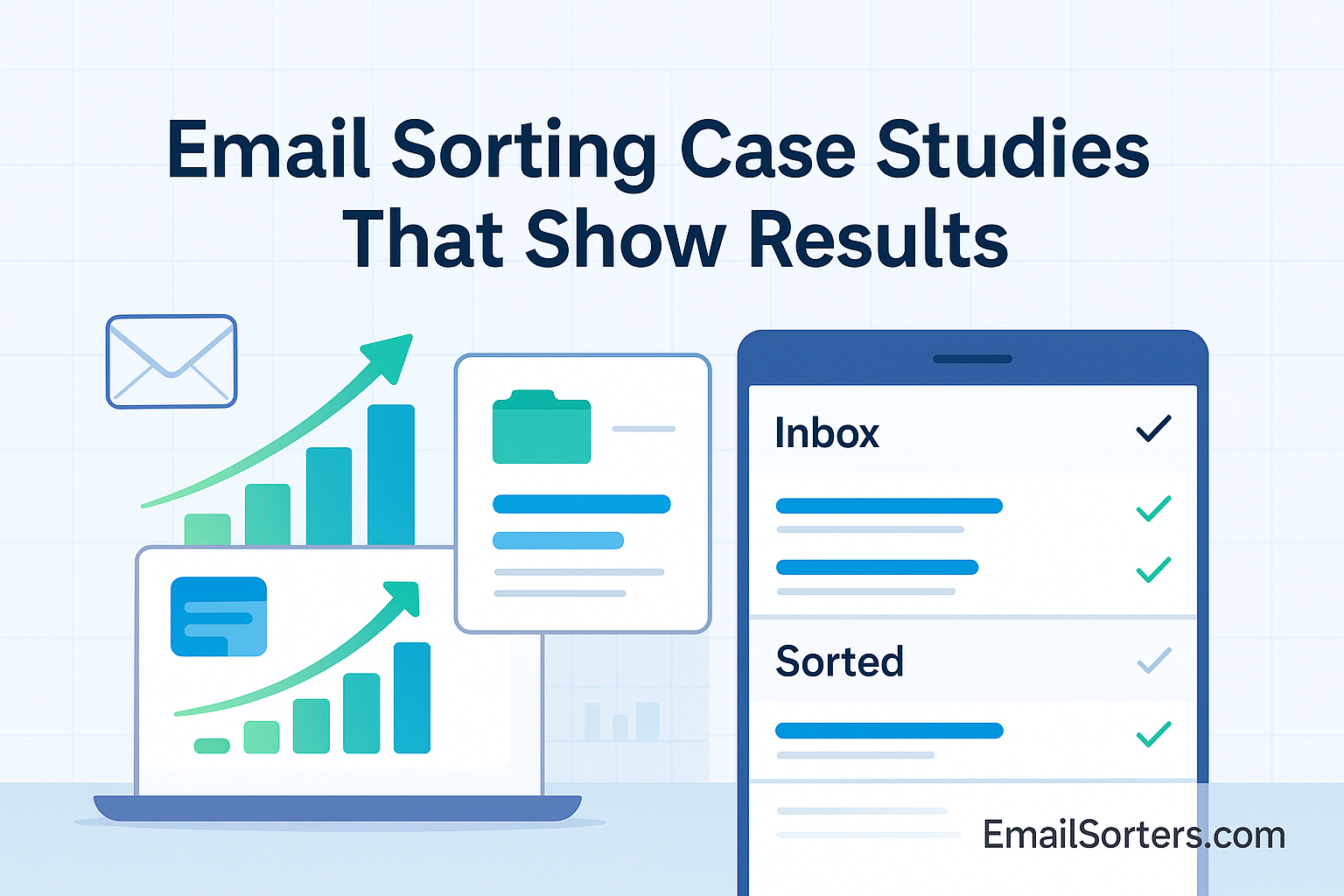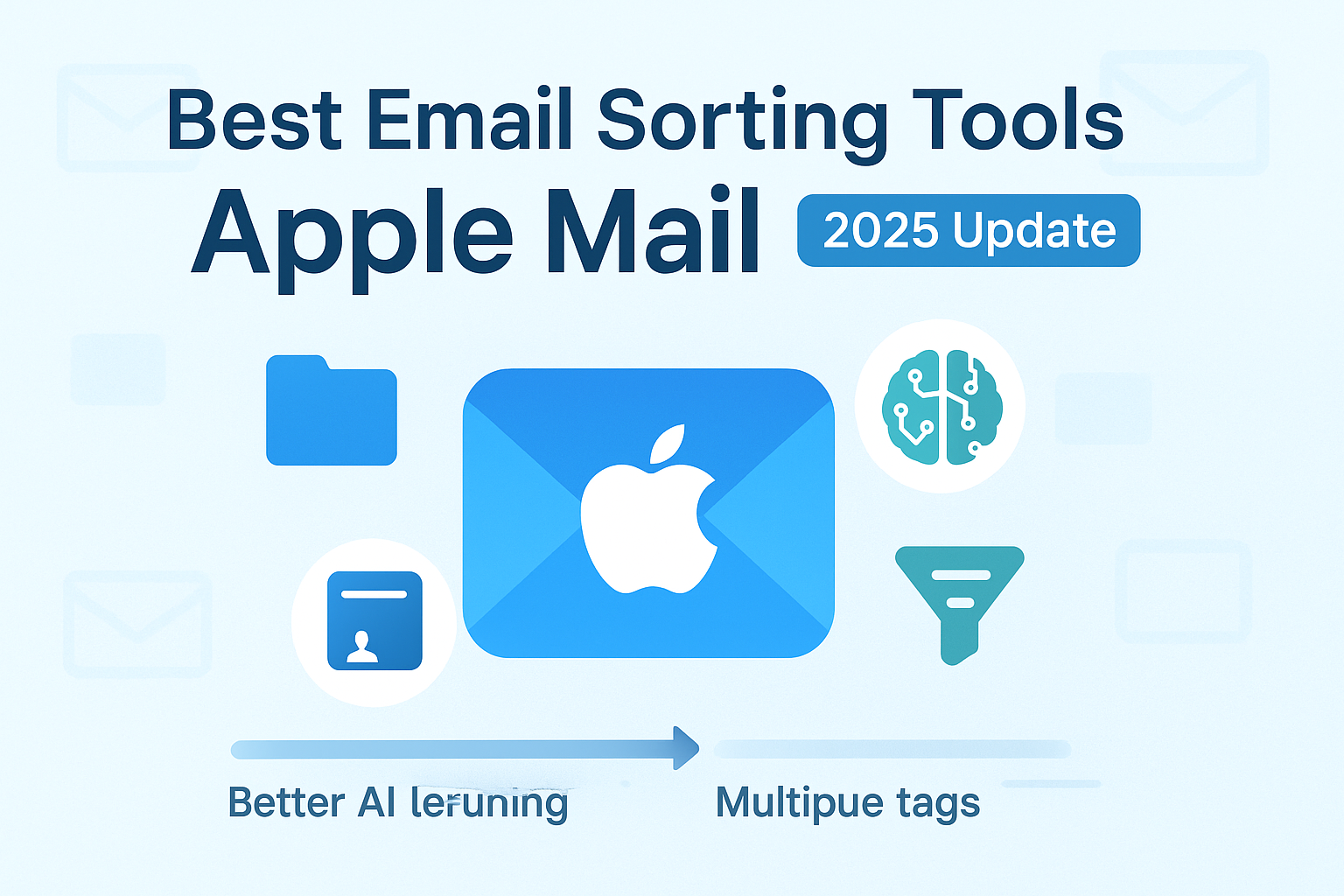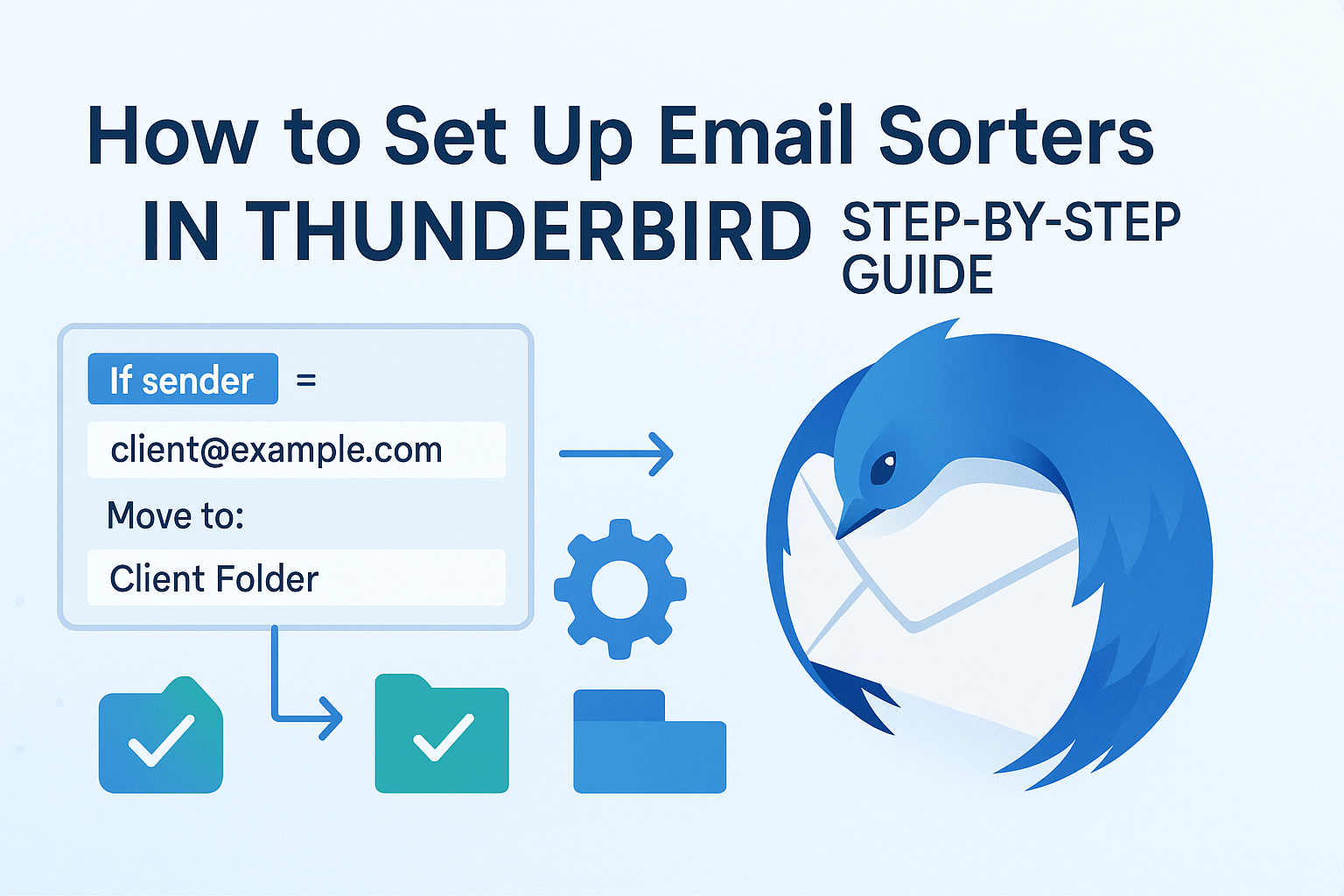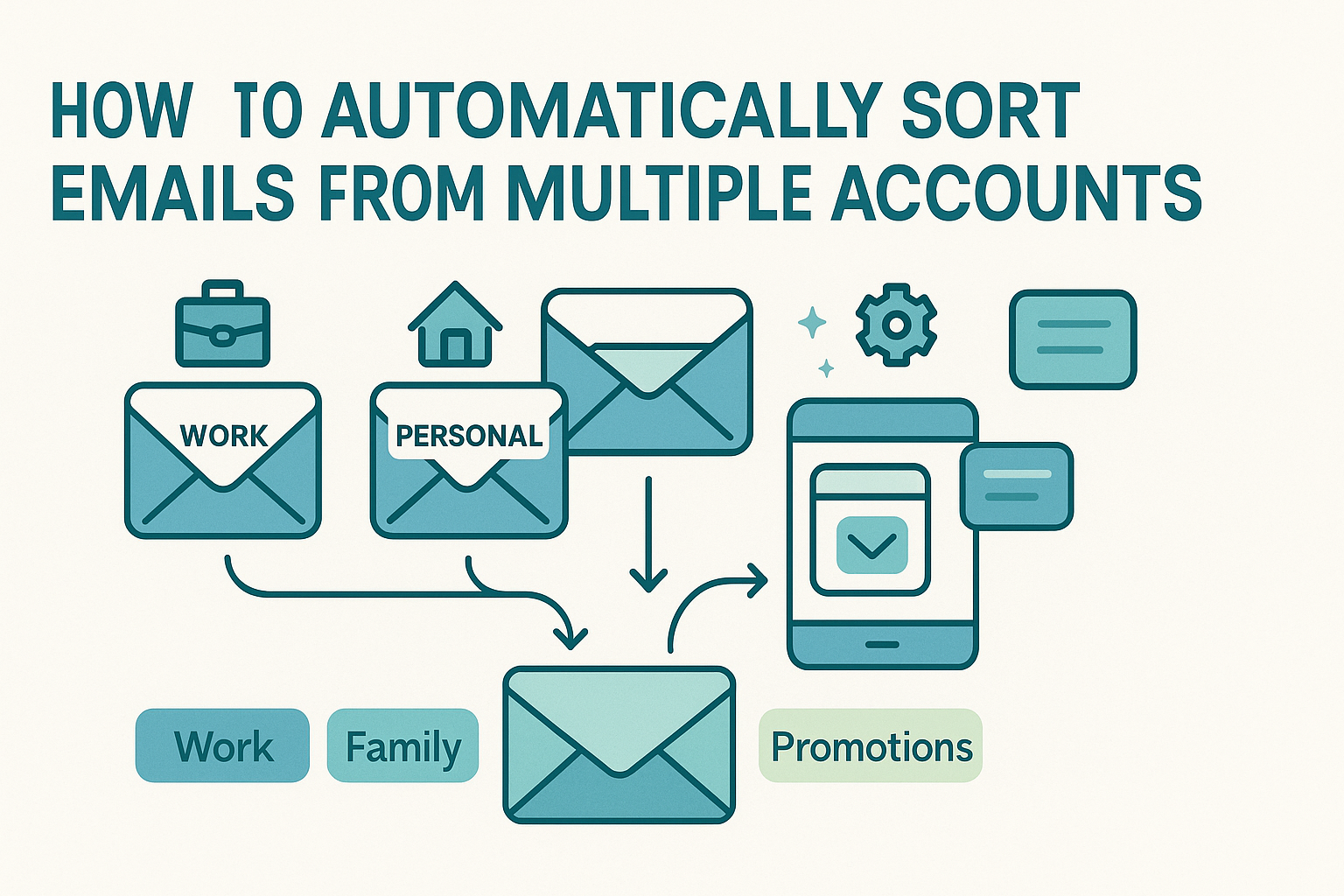In today’s fast-paced digital world, our inboxes are often overflowing with messages. This constant influx can lead to inbox overload, wasting valuable time and decreasing productivity. Email sorting is a crucial strategy for managing this chaos. By organizing emails effectively, individuals and businesses can save time, reduce stress, and improve efficiency. This blog post explores why email sorting matters, what it involves, and how it can transform workflows through real-world case studies.
Why Email Sorting Matters
Email sorting is essential because it helps you regain control of your inbox. Without it, important messages can get buried under a pile of less critical ones, leading to missed deadlines, frustrated clients, and wasted hours. For teams, freelancers, and businesses, a cluttered inbox can disrupt workflows and hinder communication. Sorting emails ensures that you can quickly find what’s important, respond promptly, and focus on high-priority tasks.
What Are Email Sorting Case Studies?
Email sorting case studies are detailed examples of how individuals, teams, or businesses have used email sorting strategies to improve their productivity. These studies typically outline the problem, the solution implemented, and the measurable results achieved. They are valuable because they provide concrete evidence of how email sorting can lead to tangible benefits, such as faster response times, reduced stress, and better client communication.
Why Do Email Sorting Case Studies Matter?
Case studies matter because they offer practical insights that anyone can apply. Whether you’re a freelancer juggling multiple clients, a team managing a shared inbox, or a business aiming to streamline communication, these studies show what works in real-world scenarios. They help you understand how to implement effective strategies tailored to your needs, saving you time and boosting your efficiency.
Understanding Email Sorting
Email sorting is the process of organizing emails based on specific criteria to make them easier to manage. This can be done manually by creating folders or automatically using rules and filters. For example, rule-based filters can automatically move emails from a specific sender or with certain keywords into designated folders. This reduces the need for manual sorting and ensures that important emails are always easy to find.
Rule-Based Filters in Real Life
Rule-based filters are simple yet powerful. For instance, you can set a rule to move all emails from your boss to a “High Priority” folder or sort promotional emails into a “Newsletters” folder. These filters save time by automating repetitive tasks and keeping your inbox organized. According to Indeed.com, proper email organization techniques can increase productivity and reduce workplace stress.
AI-Based Sorting Systems
AI-based sorting systems take things a step further. Using machine learning, these tools learn from your behavior to predict which emails are most important. They can prioritize messages, suggest responses, or even draft replies. For example, an AI system might flag an email from a key client as urgent while moving routine updates to a lower-priority folder. This level of automation can significantly improve workflow by reducing the mental load of managing emails. Tools like Sortd and EmailAnalytics, mentioned in HiverHQ, are great examples of AI-driven solutions.
Metrics for Success
To measure the effectiveness of email sorting, you can track several key performance indicators (KPIs):
| Metric | Description |
| Time Saved | How much time is saved by not manually sorting emails? |
| Response Time | Has the average response time to emails decreased? |
| Error Reduction | Are fewer important emails missed or overlooked? |
| Inbox Clutter | Is the inbox less cluttered, making it easier to find messages? |
| User Satisfaction | Do users feel less stressed and more in control of their email? |
These metrics help quantify the benefits of email sorting and demonstrate its impact on productivity. Research from ScienceDirect suggests that strategies like keeping the inbox at zero can significantly improve email management performance.
Case Studies: Real Results from Email Sorting
Let’s look at five case studies that highlight the power of email sorting.
Case Study 1: Company A Reduces Response Time by 30%
Problem: Company A, a mid-sized marketing firm, struggled with delayed responses to client inquiries. Their employees spent hours daily searching for important emails, leading to frustrated clients and lost opportunities.
Solution: The company implemented a rule-based email sorting system. They created folders for each client and set up filters to automatically sort incoming emails based on sender or subject. They also used color coding to highlight urgent messages, as recommended by Time to Reply.
Result: After implementing the system, Company A reduced their average response time to client emails by 30%. Employees could quickly locate and respond to key messages, improving client satisfaction and boosting business.
Case Study 2: Freelancer B Saves 5 Hours Weekly
Problem: Freelancer B, a graphic designer, was overwhelmed by emails from clients, collaborators, and spam. This constant distraction cut into her productive work time.
Solution: Freelancer B adopted an AI-based email sorting tool. The tool learned to prioritize her emails based on her interaction patterns and automatically unsubscribed her from unnecessary newsletters, a tactic supported by Paymo.
Result: By using the AI-based system, Freelancer B saved about 5 hours per week previously spent on email management. This allowed her to focus more on her design work, increasing her productivity and client satisfaction.
Case Study 3: Marketing Team C Improves Client Communication by 25%
Problem: The marketing team at Company C faced challenges coordinating with clients due to a messy shared inbox. Important emails were often buried under less critical ones, causing delays in project updates and approvals.
Solution: The team implemented a combination of rule-based filters and AI-based sorting. They created folders for different campaigns and used AI to flag high-priority emails from key clients. Labels and search functions helped them quickly retrieve specific information, as suggested by Wisestamp.
Result: The new system improved client communication by 25%, as measured by faster response times and fewer missed deadlines. The team could focus on strategic tasks rather than email management, leading to better campaign outcomes.
Case Study 4: Small Business D Cuts Email Overload by 40%
Problem: Small Business D, an e-commerce store, received hundreds of emails daily, including customer inquiries, order updates, and promotional messages. Their team struggled to keep up, leading to slower customer service and missed sales opportunities.
Solution: The business adopted an AI-based sorting system that categorized emails into folders like “Customer Support,” “Orders,” and “Promotions.” It also flagged urgent customer inquiries for immediate attention, aligning with strategies from Trimbox.
Result: The system reduced email overload by 40%, as the team could quickly address customer issues and focus on high-priority tasks. This led to a 15% increase in customer satisfaction scores.
Case Study 5: Tech Startup E Boosts Team Collaboration by 20%
Problem: Tech Startup E’s growing team faced challenges with a shared inbox. Emails from different departments were mixed together, making it hard to track project-related communications.
Solution: The startup implemented a rule-based system with folders for each department and project. They also used labels to tag emails by priority and status (e.g., “Pending,” “Resolved”), as advised by Fast Company.
Result: The new system improved team collaboration by 20%, as measured by faster project turnaround times and fewer miscommunications. The organized inbox helped the team stay aligned and focused.
How You Can Implement Email Sorting Strategies
Ready to apply these lessons to your own email workflow? Here’s how you can get started:
- Assess Your Current Email Situation: Identify what’s causing the most clutter in your inbox. Is it too many newsletters, unorganized client emails, or something else?
- Choose the Right Tools: Decide whether rule-based filters, AI-based systems, or a combination will work best for you. Many email platforms like Gmail and Outlook offer built-in tools for this, as noted by PCMag.
- Set Up Folders and Filters: Create a logical folder structure (e.g., “Clients,” “Projects,” “Newsletters”) and set up filters to automatically sort emails based on sender, subject, or keywords.
- Use Labels and Color Coding: Enhance your system with labels and colors for quick visual identification. For example, use red for urgent emails and green for low-priority ones.
- Regularly Review and Adjust: Check your system periodically to ensure it’s still meeting your needs. Update filters or folders as your workflow changes.
- Consider AI Enhancements: If possible, integrate AI-based tools to automate more complex tasks, like prioritizing emails or drafting responses. Tools like those mentioned in HiverHQ can be a great starting point.
By following these steps, you can create a system that saves time and reduces stress. For more inspiration, check out these Email Sorting Case Studies That Show Results, which demonstrate how sorting tools have helped real businesses thrive.
Conclusion
Email sorting is a game-changer for productivity. It transforms your inbox from a source of stress into a well-organized hub of efficiency. As shown by the case studies, whether you’re a freelancer, a small business, or a large team, email sorting can lead to measurable improvements like faster response times, reduced clutter, and better communication. Don’t let your inbox control you—take control of it. Start implementing smarter email management strategies today and reap the benefits of a more productive workflow.




